Sumner High School
Introduction
Text-to-speech Audio
Sumner High School was built in 1905 as the city’s first racially segregated high school for African Americans. The first public high school in the area, Kansas City, Kansas High School (KCKHS) had been integrated, and about 5% of its student population was Black. An unrelated homicide in 1904 led proponents of racial segregation to bypass a state law that permitted segregation at the elementary and high school levels in larger cities but required high schools to be integrated owing to the costs of maintaining separate schools. Sumner High School quickly established itself as one of the best high schools in the state, due to outstanding faculty and a high level of academic achievement by students. The first Sumner High School was replaced by a new building in 1939, partially using funds from the Public Works Administration program of the Great Depression era. In 1958, Martin Luther King spoke at Sumner and predicted the end of segregation. Today, the shcool operates as Sumner Academy of Arts and Science and is consistently rated one of the best high schools in the country.
Images
Sumner High School
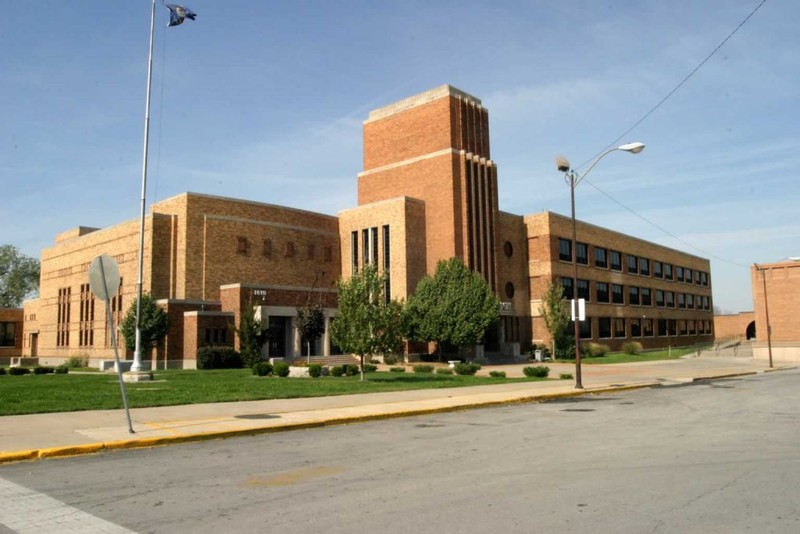
Sumner High School, now Sumner Academy of Arts and Science
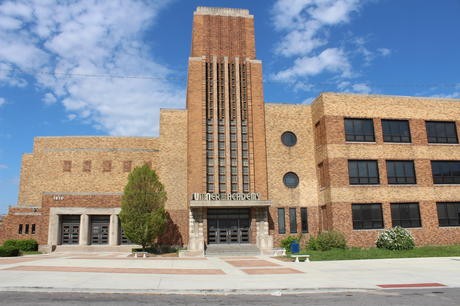
The original Sumner High School, 1905-1939
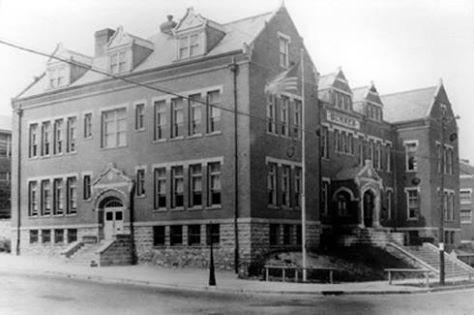
Students outside the original Sumner High School
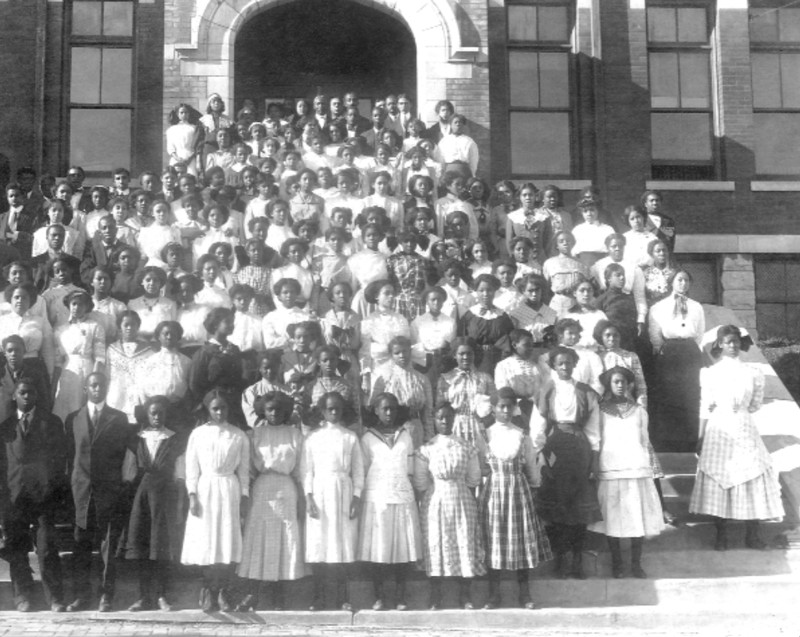
Sumner High School Faculty had a higher percentage of advanced degrees than other schools in the state
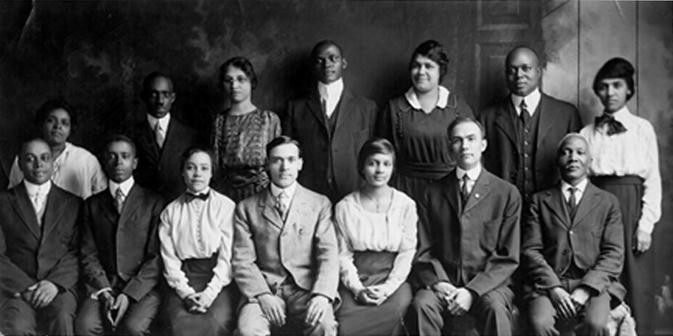
Orchestra, 1918
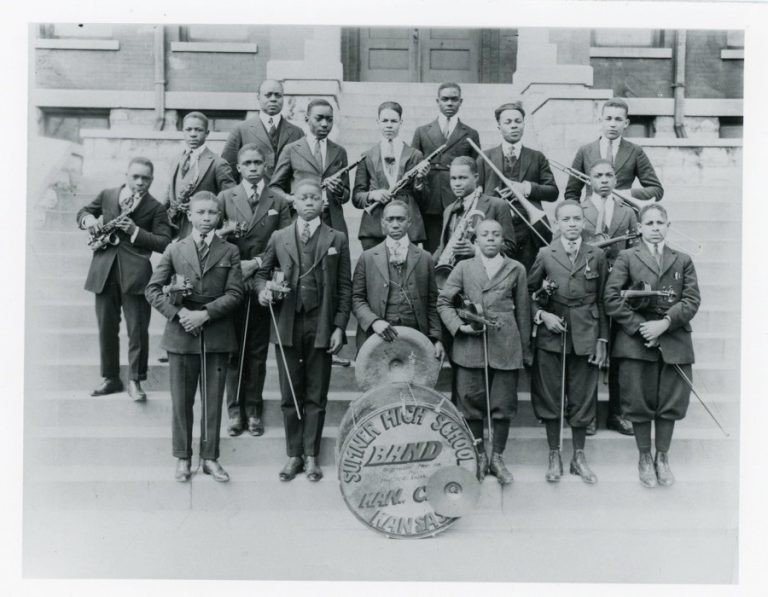
Chemistry Class, 1930s
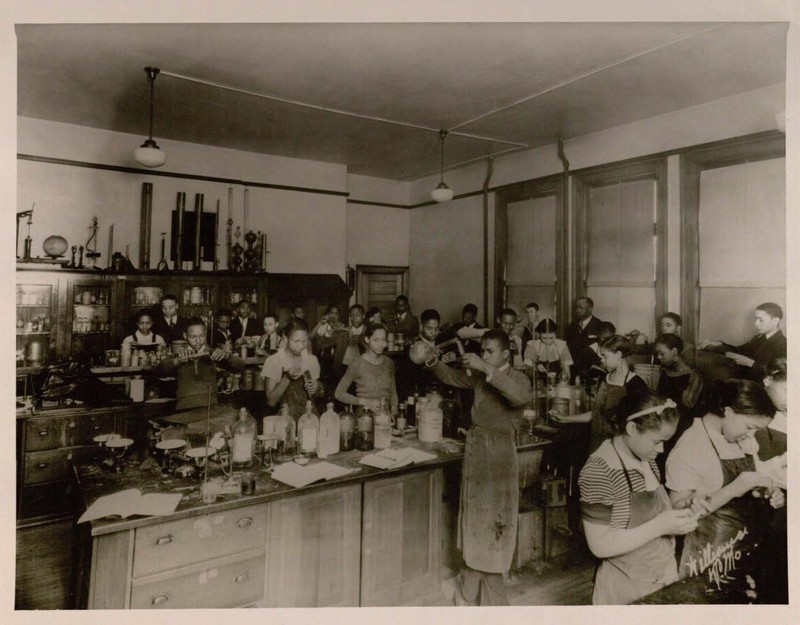
Sumner High School just after completion in 1939
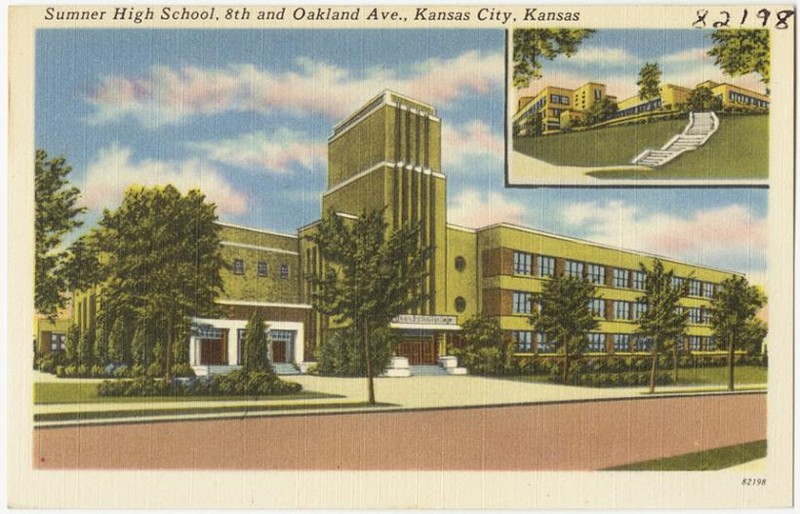
MLK spoke at Sumner High in 1958

Backstory and Context
Text-to-speech Audio
The story of Sumner High School aligns with a broader narrative about racial segregation in the US school system. At the turn of the last century, elementary schools around Kansas City, Kansas were segregated, but as fewer students continued education at the secondary level, there was little need for more than one high school. For about 20 years, KCKHS had operated as an integrated public high school, following state law that required high schools be integrated. Then, on April 2, 1904, Roy Martin, a white student at KCKHS was shot and killed by a young Black man named Louis Gregory. A lynch mob gathered outside the jail the night of Gregory’s arrest, but it was deterred by members of the African American community who had anticipated the violence and stood guard outside. [1]
Even though the shooting took place after school, off school grounds, and Gregory wasn’t even a student, the incident was used as fuel for an initiative to racially segregate the high school. The next morning, the school’s 80 Black students were blocked from entering KCKHS by about 700 white students who had formed a human barricade. Administrators turned a blind eye to the white students’ actions. When a police force arrived, they put themselves between the groups, appearing to form another barricade to the Black students trying to enter. [1]
Students, administrators, and lawmakers began a campaign to amend the state law that allowed for integration at the high school level. When the bill made it to the desk of Kansas Governor Edward Hoch, he vocally opposed it, calling it a “step backwards” and a “concession to Southern ideas,” but nevertheless, signed it into law on February 22, 1905. [1] African American leaders in the city were also opposed to segregation, although some newspapers spun stories that the bill had support from the local Black community. [1] Mamie Richardson, an 18-year-old Black student at KCKHS, filed a case against the new law that made it to the Kansas Supreme Court later that year, but was unsuccessful. A $40,000 bond was issued for the construction of the new Black high school. However, segregation took place even before the new building was completed, with white students attending KCKHS in the morning, and Black students attending “The Manual Training School” in the afternoon (in the same building with the same curriculum).
Sumner High School opened for the 1906-1907 school year at the corner of Washington and Ninth Streets. The Board of Education had chosen the name Sumner after abolitionist and US Senator Charles Sumner. Most of the faculty had advanced degrees, and Sumner quickly gained a reputation as one of the best high schools in the state, setting itself apart both in academics and in extracurricular activities. It was accredited by the North Central Association of High Schools in 1914. [2] The school hosted an annual “Ambition Day,” in which students were encouraged to come to school dressed in their desired profession. [2] Sumner High School also became “a pillar of strength in the African American community.” [1]
The original Sumner High School had a capacity of 300, which quickly became inadequate as more African Americans moved to Kansas City from the South. [2] Four rooms were added on to the high school in 1908, and a gymnasium was erected in 1924. [2] The facilities were still beyond capacity when administrators took advantage of the Public Works Administration (PWA) program of the 1930s to apply for labor to construct a new school.
The new Sumner High School opened at Oakland and Eighth Streets in 1939. The three-story brick building was designed by local architect Joseph W. Radotinsky in Art Deco style. It contained 32 classrooms, a library, an auditorium, a gymnasium, and a swimming pool. Original interior details remain today, including original woodwork, glazed brick walls, Art Deco light fixtures, terrazzo floors, and transom windows over classroom doors [3]. The school originally had a capacity of 800 students, but has since had several additions, increasing capacity to almost 1000.
In 1978, the school closed as Sumner High School and students were reassigned as part of the state’s court-order desegregation program. [2] The building was renovated and reopened as the Sumner Academy of Arts and Science. The magnet school continues to operate today and attracts academically advanced students. [2] The 2019 US News Best High Schools report ranked Sumner #1 in Kansas and #55 nationally. [4]
Cite This Entry
Admin, Clio and David Trowbridge on behalf of Black Archives of Mid-America. "Sumner High School." Clio: Your Guide to History. November 2, 2022. Accessed March 28, 2025. https://theclio.com/entry/87402
Sources
1. Peavler, David J. “Drawing the Color Line in Kansas City: The History of Sumner High School.” Kansas History: A Journal of the Central Plains 27 (Autumn 2005): 188-201. Accessed October 29, 2019. https://www.kshs.org/publicat/history/2005autumn_peavler.pdf.
2. “Sumner High School / Sumner Academy of Arts and Sciences.” Kansas City Kansas Public Schools Official Website. Accessed October 29, 2019. https://sumner.schools.kckps.org/?page_id=376.
3. Ford, Susan Jezak. “National Register of Historic Places Registration Form: Sumner High School and Athletic Field.” Kansas State Historical Society Website. Form prepared March 1, 2005. Accessed October 29, 2019. https://khri.kansasgis.org/index.cfm?in=209-2820-02040.
4. “Sumner Academy of Arts and Science.” Best US High Schools - 2019 US News & World Report. Accessed October 29, 2019. https://www.usnews.com/education/best-high-schools/kansas/districts/kansas-city/sumner-academy-of-arts-and-science-8036.
https://sumner.schools.kckps.org/?page_id=7
https://fockphysics.wordpress.com/2015/05/23/2015-2016-sumner-academy-of-arts-science-job-postings/
https://www.kshs.org/publicat/history/2005autumn_peavler.pdf
https://www.kshs.org/publicat/history/2005autumn_peavler.pdf
Kenneth Spencer Research Library, University of Kansas: https://exhibits.lib.ku.edu/exhibits/show/education
Kenneth Spencer Research Library, University of Kansas: https://blogs.lib.ku.edu/spencer/tag/sumner-high-school/
Kenneth Spencer Research Library, University of Kansas: https://blogs.lib.ku.edu/spencer/tag/sumner-high-school/
https://www.digitalcommonwealth.org/search/commonwealth:6d570476p
https://flatlandkc.org/news-issues/mlk-in-kansas-city-martin-luther-king-day/

